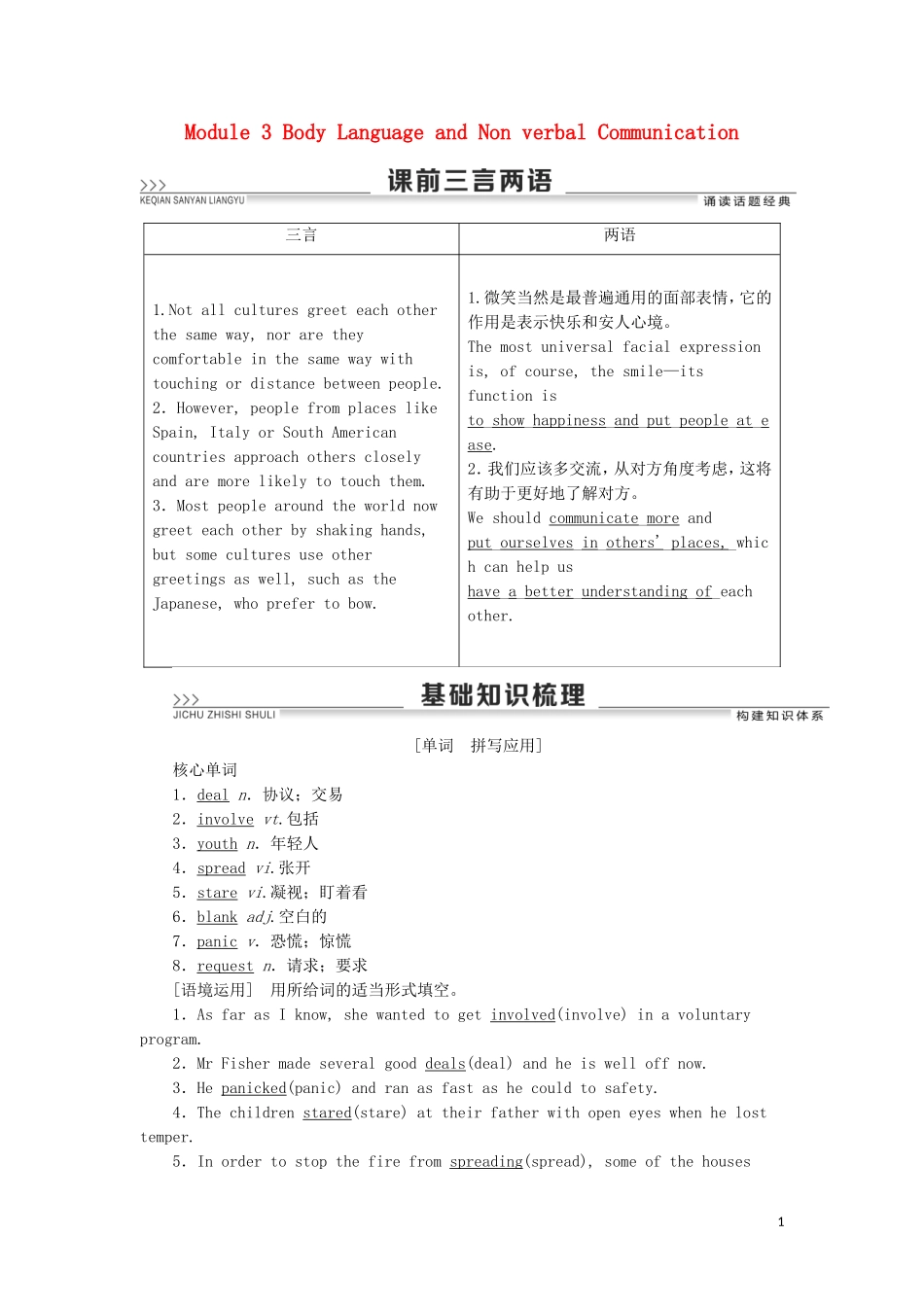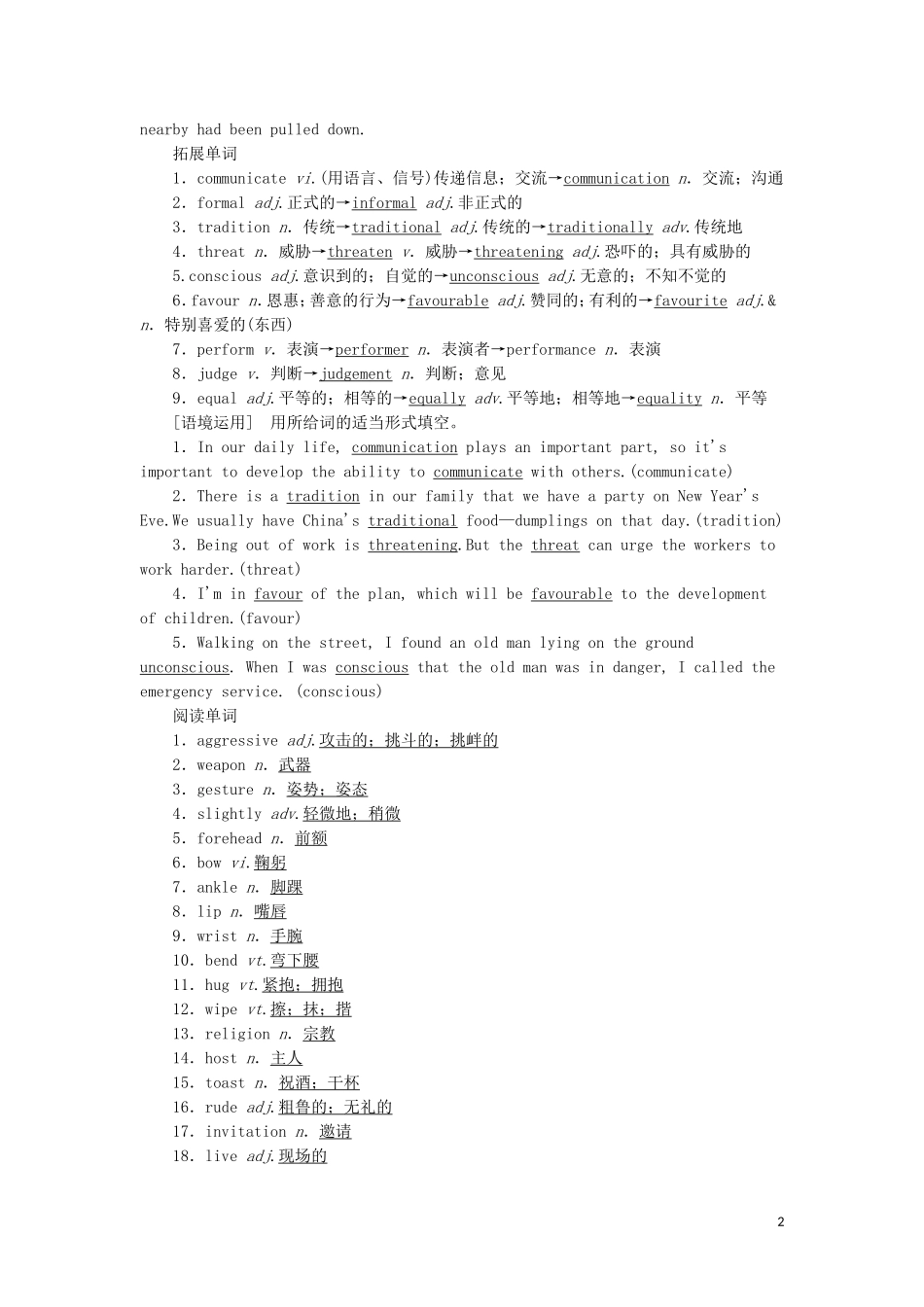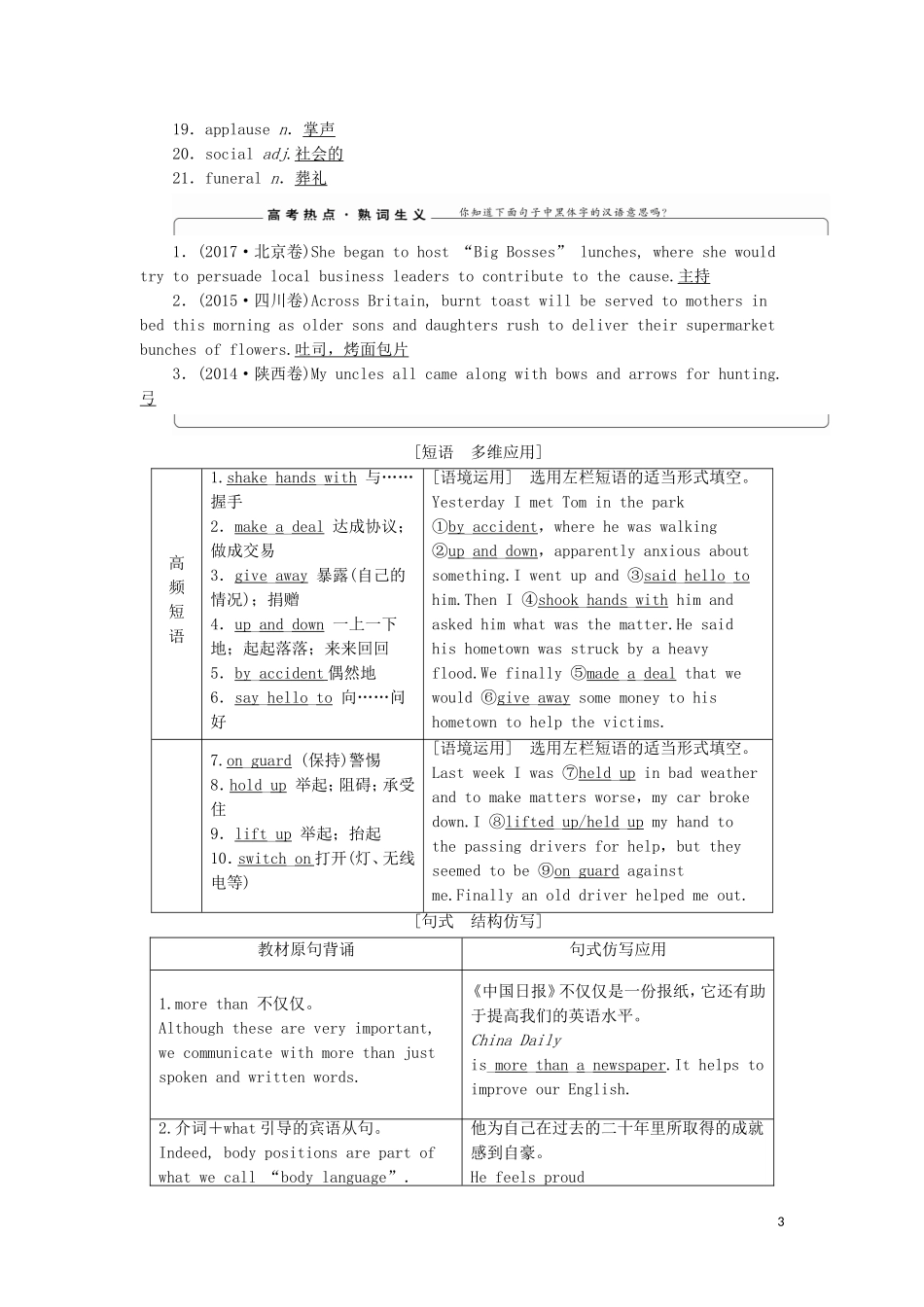Module 3 Body Language and Non verbal Communication三言两语1.Not all cultures greet each other the same way, nor are they comfortable in the same way with touching or distance between people.2.However, people from places like Spain, Italy or South American countries approach others closely and are more likely to touch them.3.Most people around the world now greet each other by shaking hands, but some cultures use other greetings as well, such as the Japanese, who prefer to bow.1.微笑当然是最普遍通用的面部表情,它的作用是表示快乐和安人心境。The most universal facial expression is, of course, the smile—its function is to_show_happiness_and_put_people_at_ease.2.我们应该多交流,从对方角度考虑,这将有助于更好地了解对方。We should communicate_more and put_ourselves_in_others'_places,_which can help us have_a_better_understanding_of_each other.[单词 拼写应用]核心单词1.deal n.协议;交易2.involve vt.包括3.youth n.年轻人4.spread vi.张开5.stare vi.凝视;盯着看6.blank adj.空白的7.panic v.恐慌;惊慌8.request n.请求;要求[语境运用] 用所给词的适当形式填空。1.As far as I know, she wanted to get involved(involve) in a voluntary program.2.Mr Fisher made several good deals(deal) and he is well off now.3.He panicked(panic) and ran as fast as he could to safety.4.The children stared(stare) at their father with open eyes when he lost temper.5.In order to stop the fire from spreading(spread), some of the houses 1nearby had been pulled down.拓展单词1.communicate vi.(用语言、信号)传递信息;交流→communication n.交流;沟通2.formal adj.正式的→informal adj.非正式的3.tradition n.传统→traditional adj.传统的→traditionally adv.传统地4.threat n.威胁→threaten v.威胁→threatening adj.恐吓的;具有威胁的5.conscious adj.意识到的;自觉的→unconscious adj.无意的;不知不觉的6.favour n.恩惠...


